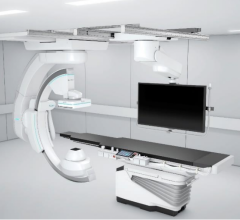
Medtronic announced Feb. 3 that the U.S. Food and Drug Administration (FDA) revised the CoreValve’s instructions for use (IFU) labeling to include patients with end-stage renal disease and low flow, low gradient aortic stenosis. Previously, physicians were cautioned against treating these patients with transcatheter aortic valve replacement (TAVR) because of their severe comorbidities.
The decision was based on positive CoreValve data from the CoreValve U.S. Expanded Use Study presented at the 2015 Transcatheter Cardiovascular Therapeutics (TCT) last October. The data show impressive rates of stroke and excellent survival in these patients at one-year. Both patient populations also showed significantly improved quality of life at one-year follow up (P < 0.001 from baseline).
The two patient populations showed impressive rates of one-year mortality (23.1 percent LFLG and 32.7 percent ESRD), major stroke (4.9 percent LFLG and 1.0 percent ESRD), and significantly improved quality of life at one-year follow up (P < 0.001 from baseline). Results from both cohorts are comparable to those seen in the CoreValve U.S. Pivotal Extreme Risk Trial.
CoreValve U.S. Expanded Use Study included three populations, including patients with a degenerated surgical bioprosthesis, patients with end-stage renal disease and patients with low gradient aortic stenosis. In March 2015, the CoreValve System was the first transcatheter heart valve approved by the FDA for valve-in-valve procedures in both high and extreme risk patients with failed surgical valves.
"It's encouraging to see patients benefitting from the CoreValve System, many of whom have been unable to receive treatment due to these severe comorbidities," said Michael Reardon, M.D., professor of cardiothoracic surgery at Houston Methodist DeBakey Heart and Vascular Center, and chairman of the patient screening committee of the CoreValve U.S. Pivotal Trial. "When treated with the CoreValve system, not only do these patients live longer, they are able to achieve and maintain a good quality of life, which is really important for these individuals and their loved ones."
End-stage Renal Disease
Another subset from the Expanded Use Study included patients with end-stage renal disease, who also showed a low rate of mortality and stroke. Despite the clinical challenges of treating this patient population, CoreValve exceeded the objective performance goal for all-cause mortality or major stroke set out in the original CoreValve Extreme Risk Study (30.3 percent in this population vs. the objective performance goal of 43 percent in the US Pivotal ER). Additionally, the rate of all-cause mortality among the end-stage renal patients in the Expanded Use Study was lower than that of patients undergoing dialysis in the Transcatheter Valve Therapy (TVT) Registry (30.3 vs. 41 percent). End-stage renal patients also showed a significant improvement in quality of life at one year with an average increase in the KCCQ overall summary score of 27.5 points compared to baseline.
Low Gradient Aortic Stenosis
Findings from the low gradient aortic stenosis (LG-AS) patient population within the Expanded Use Study were also comparable to the CoreValve Extreme Risk Study. Patients with LG-AS treated with the self-expanding valve had a low rate of all-cause mortality or major stroke whether or not they had LG-AS with normal ejection fraction (26.0 percent for LG-NEF, N=113) or LG-AS with low ejection fraction (26.3 percent for LG-LEF, N=46). The KCCQ score confirmed the patients' improvement in quality of life at one year with average improvements of 25.8 (LG-NEF) and 30.5 (LG-LEF), respectively.
For more information: www.medtronic.com


 May 01, 2025
May 01, 2025 








